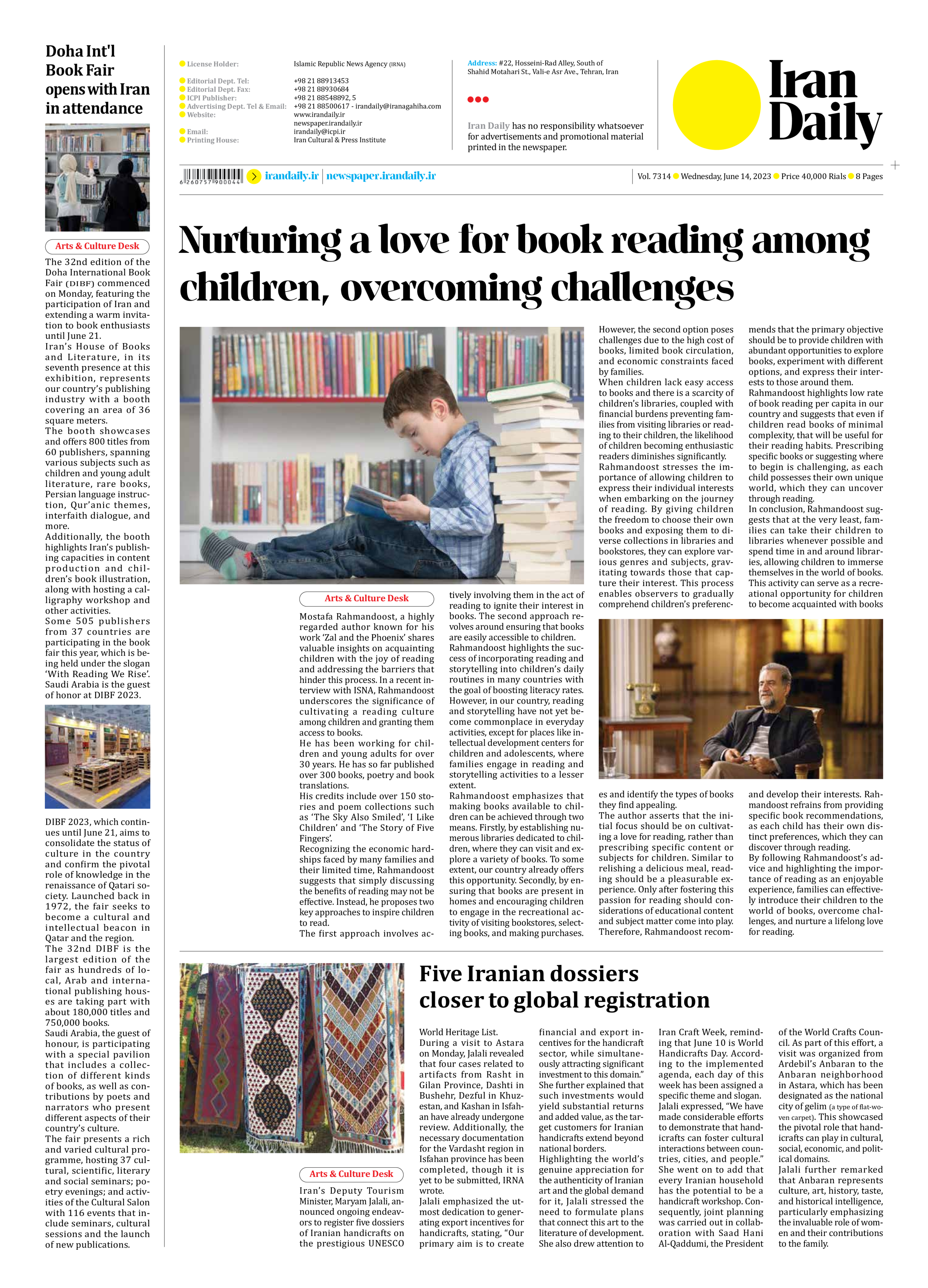
Nurturing a love for book reading among children, overcoming challenges
Mostafa Rahmandoost, a highly regarded author known for his work ‘Zal and the Phoenix’ shares valuable insights on acquainting children with the joy of reading and addressing the barriers that hinder this process. In a recent interview with ISNA, Rahmandoost underscores the significance of cultivating a reading culture among children and granting them access to books.
He has been working for children and young adults for over 30 years. He has so far published over 300 books, poetry and book translations.
His credits include over 150 stories and poem collections such as ‘The Sky Also Smiled’, ‘I Like Children’ and ‘The Story of Five Fingers’.
Recognizing the economic hardships faced by many families and their limited time, Rahmandoost suggests that simply discussing the benefits of reading may not be effective. Instead, he proposes two key approaches to inspire children to read.
The first approach involves actively involving them in the act of reading to ignite their interest in books. The second approach revolves around ensuring that books are easily accessible to children.
Rahmandoost highlights the success of incorporating reading and storytelling into children’s daily routines in many countries with the goal of boosting literacy rates. However, in our country, reading and storytelling have not yet become commonplace in everyday activities, except for places like intellectual development centers for children and adolescents, where families engage in reading and storytelling activities to a lesser extent.
Rahmandoost emphasizes that making books available to children can be achieved through two means. Firstly, by establishing numerous libraries dedicated to children, where they can visit and explore a variety of books. To some extent, our country already offers this opportunity. Secondly, by ensuring that books are present in homes and encouraging children to engage in the recreational activity of visiting bookstores, selecting books, and making purchases. However, the second option poses challenges due to the high cost of books, limited book circulation, and economic constraints faced by families.
When children lack easy access to books and there is a scarcity of children’s libraries, coupled with financial burdens preventing families from visiting libraries or reading to their children, the likelihood of children becoming enthusiastic readers diminishes significantly.
Rahmandoost stresses the importance of allowing children to express their individual interests when embarking on the journey of reading. By giving children the freedom to choose their own books and exposing them to diverse collections in libraries and bookstores, they can explore various genres and subjects, gravitating towards those that capture their interest. This process enables observers to gradually comprehend children’s preferences and identify the types of books they find appealing.
The author asserts that the initial focus should be on cultivating a love for reading, rather than prescribing specific content or subjects for children. Similar to relishing a delicious meal, reading should be a pleasurable experience. Only after fostering this passion for reading should considerations of educational content and subject matter come into play. Therefore, Rahmandoost recommends that the primary objective should be to provide children with abundant opportunities to explore books, experiment with different options, and express their interests to those around them.
Rahmandoost highlights low rate of book reading per capita in our country and suggests that even if children read books of minimal complexity, that will be useful for their reading habits. Prescribing specific books or suggesting where to begin is challenging, as each child possesses their own unique world, which they can uncover through reading.
In conclusion, Rahmandoost suggests that at the very least, families can take their children to libraries whenever possible and spend time in and around libraries, allowing children to immerse themselves in the world of books. This activity can serve as a recreational opportunity for children to become acquainted with books and develop their interests. Rahmandoost refrains from providing specific book recommendations, as each child has their own distinct preferences, which they can discover through reading.
By following Rahmandoost’s advice and highlighting the importance of reading as an enjoyable experience, families can effectively introduce their children to the world of books, overcome challenges, and nurture a lifelong love for reading.







